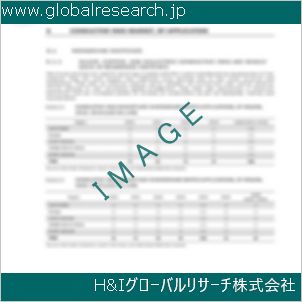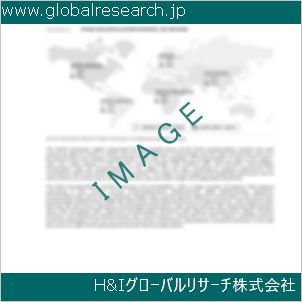1. Executive Summary
1.1. Market Definition and Scope
1.2. Market Segmentation
1.3. Key Research Objectives
1.4. Research Highlights
2. Assumptions and Research Methodology
3. Executive Summary: Global Engineering Plastic Compounds Market
4. Market Overview
4.1. Market Segmentation
4.1.1. Segment Definition
4.1.2. Industry Evolution / Developments
4.2. Overview
4.3. Market Dynamics
4.3.1. Drivers
4.3.2. Restraints
4.3.3. Opportunities
4.4. Global Engineering Plastic Compounds Market Analysis and Forecast, 2023-2031
5. Key Insights
5.1. Pipeline Analysis
5.2. Progression in Key Countries
5.3. COVID-19 Pandemic Impact on Industry
6. Global Engineering Plastic Compounds Market Analysis and Forecast, by Compound Type
6.1. Introduction and Definitions
6.2. Key Findings/Developments
6.3. Market Value Forecast, by Compound Type, 2023-2031
6.3.1. Polycarbonate (PC)
6.3.2. Polyamide (PA)
6.3.3. Polymethyl Methacrylate (PMMA)
6.3.4. Polyacetyl/Polyoxymethylene (POM)
6.3.5. PET
6.3.6. PBT
6.3.7. Polyphenylene Oxide (PPO/PPE Blends)
6.3.8. Fluoropolymer (PTFE and Other FPs)
6.3.9. Polyphenylene Sulfide (PPS)
6.3.10. Acrylonitrile Butadiene Styrene (ABS)
6.3.11. Styrene-Acrylonitrile (SAN)
6.3.12. Thermoplastic Elastomer
6.3.12.1. TPE-s: Styrenic Block Copolymers
6.3.12.2. TPE-o: Thermoplastic Polyolefin Elastomers
6.3.12.3. TPE-v: Thermoplastic Vulcanizates
6.3.12.4. TPE-u: Thermoplastic Polyurethanes
6.3.12.5. TPE-e: Thermoplastic Copolyesters
6.3.12.6. TPE-a: Thermoplastic Polyamides
6.3.13. Others
6.4. Market Attractiveness, by Compound Type
7. Global Engineering Plastic Compounds Market Analysis and Forecast, by End-use
7.1. Introduction and Definitions
7.2. Key Findings/Developments
7.3. Market Value Forecast, by End-use, 2023-2031
7.3.1. Automotive & Transportation
7.3.2. Aerospace
7.3.3. Electrical & Electronics
7.3.4. Building & Construction
7.3.5. Consumer Goods & Appliances
7.3.6. Industrial Applications
7.3.7. Medical
7.3.8. Others
7.4. Market Attractiveness, by End-use
8. Global Engineering Plastic Compounds Market Analysis and Forecast, by Region
8.1. Key Findings
8.2. Market Value Forecast, by Region, 2023-2031
8.2.1. North America
8.2.2. Europe
8.2.3. Asia Pacific
8.2.4. Latin America
8.2.5. Middle East & Africa
8.3. Market Attractiveness, by Region
9. North America Engineering Plastic Compounds Market Analysis and Forecast
9.1. Introduction
9.1.1. Key Findings
9.2. Market Value Forecast, by Compound Type, 2023-2031
9.2.1. Polycarbonate (PC)
9.2.2. Polyamide (PA)
9.2.3. Polymethyl Methacrylate (PMMA)
9.2.4. Polyacetyl/Polyoxymethylene (POM)
9.2.5. PET
9.2.6. PBT
9.2.7. Polyphenylene Oxide (PPO/PPE Blends)
9.2.8. Fluoropolymer (PTFE and Other FPs)
9.2.9. Polyphenylene Sulfide (PPS)
9.2.10. Acrylonitrile Butadiene Styrene (ABS)
9.2.11. Styrene-Acrylonitrile (SAN)
9.2.12. Thermoplastic Elastomer
9.2.12.1. TPE-s: Styrenic Block Copolymers
9.2.12.2. TPE-o: Thermoplastic Polyolefin Elastomers
9.2.12.3. TPE-v: Thermoplastic Vulcanizates
9.2.12.4. TPE-u: Thermoplastic Polyurethanes
9.2.12.5. TPE-e: Thermoplastic Copolyesters
9.2.12.6. TPE-a: Thermoplastic Polyamides
9.2.13. Others
9.3. Market Value Forecast, by End-use, 2023-2031
9.3.1. Automotive & Transportation
9.3.2. Aerospace
9.3.3. Electrical & Electronics
9.3.4. Building & Construction
9.3.5. Consumer Goods & Appliances
9.3.6. Industrial Applications
9.3.7. Medical
9.3.8. Others
9.4. Market Value Forecast, by Country, 2023-2031
9.4.1. U.S.
9.4.2. Canada
9.5. Market Attractiveness Analysis
9.5.1. By Compound Type
9.5.2. By End-use
9.5.3. By Country
10. Europe Engineering Plastic Compounds Market Analysis and Forecast
10.1. Introduction
10.1.1. Key Findings
10.2. Market Value Forecast, by Compound Type, 2023-2031
10.2.1. Polycarbonate (PC)
10.2.2. Polyamide (PA)
10.2.3. Polymethyl Methacrylate (PMMA)
10.2.4. Polyacetyl/Polyoxymethylene (POM)
10.2.5. PET
10.2.6. PBT
10.2.7. Polyphenylene Oxide (PPO/PPE Blends)
10.2.8. Fluoropolymer (PTFE and Other FPs)
10.2.9. Polyphenylene Sulfide (PPS)
10.2.10. Acrylonitrile Butadiene Styrene (ABS)
10.2.11. Styrene-Acrylonitrile (SAN)
10.2.12. Thermoplastic Elastomer
10.2.12.1. TPE-s: Styrenic Block Copolymers
10.2.12.2. TPE-o: Thermoplastic Polyolefin Elastomers
10.2.12.3. TPE-v: Thermoplastic Vulcanizates
10.2.12.4. TPE-u: Thermoplastic Polyurethanes
10.2.12.5. TPE-e: Thermoplastic Copolyesters
10.2.12.6. TPE-a: Thermoplastic Polyamides
10.2.13. Others
10.3. Market Value Forecast, by End-use, 2023-2031
10.3.1. Automotive & Transportation
10.3.2. Aerospace
10.3.3. Electrical & Electronics
10.3.4. Building & Construction
10.3.5. Consumer Goods & Appliances
10.3.6. Industrial Applications
10.3.7. Medical
10.3.8. Others
10.4. Market Value Forecast, by Country/Sub-region, 2023-2031
10.4.1. Germany
10.4.2. U.K.
10.4.3. France
10.4.4. Italy
10.4.5. Spain
10.4.6. Rest of Europe
10.5. Market Attractiveness Analysis
10.5.1. By Compound Type
10.5.2. By End-use
10.5.3. By Country/Sub-region
11. Asia Pacific Engineering Plastic Compounds Market Analysis and Forecast
11.1. Introduction
11.1.1. Key Findings
11.2. Market Value Forecast, by Compound Type, 2023-2031
11.2.1. Polycarbonate (PC)
11.2.2. Polyamide (PA)
11.2.3. Polymethyl Methacrylate (PMMA)
11.2.4. Polyacetyl/Polyoxymethylene (POM)
11.2.5. PET
11.2.6. PBT
11.2.7. Polyphenylene Oxide (PPO/PPE Blends)
11.2.8. Fluoropolymer (PTFE and Other FPs)
11.2.9. Polyphenylene Sulfide (PPS)
11.2.10. Acrylonitrile Butadiene Styrene (ABS)
11.2.11. Styrene-Acrylonitrile (SAN)
11.2.12. Thermoplastic Elastomer
11.2.12.1. TPE-s: Styrenic Block Copolymers
11.2.12.2. TPE-o: Thermoplastic Polyolefin Elastomers
11.2.12.3. TPE-v: Thermoplastic Vulcanizates
11.2.12.4. TPE-u: Thermoplastic Polyurethanes
11.2.12.5. TPE-e: Thermoplastic Copolyesters
11.2.12.6. TPE-a: Thermoplastic Polyamides
11.2.13. Others
11.3. Market Value Forecast, by End-use, 2023-2031
11.3.1. Automotive & Transportation
11.3.2. Aerospace
11.3.3. Electrical & Electronics
11.3.4. Building & Construction
11.3.5. Consumer Goods & Appliances
11.3.6. Industrial Applications
11.3.7. Medical
11.3.8. Others
11.4. Market Value Forecast, by Country/Sub-region, 2023-2031
11.4.1. China
11.4.2. Japan
11.4.3. India
11.4.4. Australia & New Zealand
11.4.5. Rest of Asia Pacific
11.5. Market Attractiveness Analysis
11.5.1. By Compound Type
11.5.2. By End-use
11.5.3. By Country/Sub-region
12. Latin America Engineering Plastic Compounds Market Analysis and Forecast
12.1. Introduction
12.1.1. Key Findings
12.2. Market Value Forecast, by Compound Type, 2023-2031
12.2.1. Polycarbonate (PC)
12.2.2. Polyamide (PA)
12.2.3. Polymethyl Methacrylate (PMMA)
12.2.4. Polyacetyl/Polyoxymethylene (POM)
12.2.5. PET
12.2.6. PBT
12.2.7. Polyphenylene Oxide (PPO/PPE Blends)
12.2.8. Fluoropolymer (PTFE and Other FPs)
12.2.9. Polyphenylene Sulfide (PPS)
12.2.10. Acrylonitrile Butadiene Styrene (ABS)
12.2.11. Styrene-Acrylonitrile (SAN)
12.2.12. Thermoplastic Elastomer
12.2.12.1. TPE-s: Styrenic Block Copolymers
12.2.12.2. TPE-o: Thermoplastic Polyolefin Elastomers
12.2.12.3. TPE-v: Thermoplastic Vulcanizates
12.2.12.4. TPE-u: Thermoplastic Polyurethanes
12.2.12.5. TPE-e: Thermoplastic Copolyesters
12.2.12.6. TPE-a: Thermoplastic Polyamides
12.2.13. Others
12.3. Market Value Forecast, by End-use, 2023-2031
12.3.1. Automotive & Transportation
12.3.2. Aerospace
12.3.3. Electrical & Electronics
12.3.4. Building & Construction
12.3.5. Consumer Goods & Appliances
12.3.6. Industrial Applications
12.3.7. Medical
12.3.8. Others
12.4. Market Value Forecast, by Country/Sub-region, 2023-2031
12.4.1. Brazil
12.4.2. Mexico
12.4.3. Rest of Latin America
12.5. Market Attractiveness Analysis
12.5.1. By Compound Type
12.5.2. By End-use
12.5.3. By Country/Sub-region
13. Middle East & Africa Engineering Plastic Compounds Market Analysis and Forecast
13.1. Introduction
13.1.1. Key Findings
13.2. Market Value Forecast, by Compound Type, 2023-2031
13.2.1. Polycarbonate (PC)
13.2.2. Polyamide (PA)
13.2.3. Polymethyl Methacrylate (PMMA)
13.2.4. Polyacetyl/Polyoxymethylene (POM)
13.2.5. PET
13.2.6. PBT
13.2.7. Polyphenylene Oxide (PPO/PPE Blends)
13.2.8. Fluoropolymer (PTFE and Other FPs)
13.2.9. Polyphenylene Sulfide (PPS)
13.2.10. Acrylonitrile Butadiene Styrene (ABS)
13.2.11. Styrene-Acrylonitrile (SAN)
13.2.12. Thermoplastic Elastomer
13.2.12.1. TPE-s: Styrenic Block Copolymers
13.2.12.2. TPE-o: Thermoplastic Polyolefin Elastomers
13.2.12.3. TPE-v: Thermoplastic Vulcanizates
13.2.12.4. TPE-u: Thermoplastic Polyurethanes
13.2.12.5. TPE-e: Thermoplastic Copolyesters
13.2.12.6. TPE-a: Thermoplastic Polyamides
13.2.13. Others
13.3. Market Value Forecast, by End-use, 2023-2031
13.3.1. Automotive & Transportation
13.3.2. Aerospace
13.3.3. Electrical & Electronics
13.3.4. Building & Construction
13.3.5. Consumer Goods & Appliances
13.3.6. Industrial Applications
13.3.7. Medical
13.3.8. Others
13.4. Market Value Forecast, by Country/Sub-region, 2023-2031
13.4.1. GCC Countries
13.4.2. South Africa
13.4.3. Rest of Middle East & Africa
13.5. Market Attractiveness Analysis
13.5.1. By Compound Type
13.5.2. By End-use
13.5.3. By Country/Sub-region
14. Competition Landscape
14.1. Market Player – Competition Matrix (By Tier and Size of Companies)
14.2. Market Share Analysis, by Company (2022)
14.3. Company Profiles
14.3.1. Grand Pacific Petrochemical Corporation
14.3.1.1. Company Overview (HQ, Business Segments, Employee Strength)
14.3.1.2. Product Portfolio
14.3.1.3. Financial Overview
14.3.1.4. SWOT Analysis
14.3.1.5. Strategic Overview
14.3.2. Mitsubishi Engineering-Plastics Corporation
14.3.2.1. Company Overview (HQ, Business Segments, Employee Strength)
14.3.2.2. Product Portfolio
14.3.2.3. Financial Overview
14.3.2.4. SWOT Analysis
14.3.2.5. Strategic Overview
14.3.3. Wittenburg Group
14.3.3.1. Company Overview (HQ, Business Segments, Employee Strength)
14.3.3.2. Product Portfolio
14.3.3.3. Financial Overview
14.3.3.4. SWOT Analysis
14.3.3.5. Strategic Overview
14.3.4. Piper Plastics Corp.
14.3.4.1. Company Overview (HQ, Business Segments, Employee Strength)
14.3.4.2. Product Portfolio
14.3.4.3. Financial Overview
14.3.4.4. SWOT Analysis
14.3.4.5. Strategic Overview
14.3.5. Chevron Phillips Chemical Company LLC
14.3.5.1. Company Overview (HQ, Business Segments, Employee Strength)
14.3.5.2. Product Portfolio
14.3.5.3. Financial Overview
14.3.5.4. SWOT Analysis
14.3.5.5. Strategic Overview
14.3.6. Daicel Corporation
14.3.6.1. Company Overview (HQ, Business Segments, Employee Strength)
14.3.6.2. Product Portfolio
14.3.6.3. Financial Overview
14.3.6.4. SWOT Analysis
14.3.6.5. Strategic Overview
14.3.7. Evonik Industries AG
14.3.7.1. Company Overview (HQ, Business Segments, Employee Strength)
14.3.7.2. Product Portfolio
14.3.7.3. Financial Overview
14.3.7.4. SWOT Analysis
14.3.7.5. Strategic Overview
14.3.8. Eastman Chemical Company
14.3.8.1. Company Overview (HQ, Business Segments, Employee Strength)
14.3.8.2. Product Portfolio
14.3.8.3. Financial Overview
14.3.8.4. SWOT Analysis
14.3.8.5. Strategic Overview
14.3.9. Ascend Performance Materials
14.3.9.1. Company Overview (HQ, Business Segments, Employee Strength)
14.3.9.2. Product Portfolio
14.3.9.3. Financial Overview
14.3.9.4. SWOT Analysis
14.3.9.5. Strategic Overview
14.3.10. Ravago
14.3.10.1. Company Overview (HQ, Business Segments, Employee Strength)
14.3.10.2. Product Portfolio
14.3.10.3. Financial Overview
14.3.10.4. SWOT Analysis
14.3.10.5. Strategic Overview
14.3.11. Teknor Apex
14.3.11.1. Company Overview (HQ, Business Segments, Employee Strength)
14.3.11.2. Product Portfolio
14.3.11.3. Financial Overview
14.3.11.4. SWOT Analysis
14.3.11.5. Strategic Overview
14.3.12. Trinseo LLC
14.3.12.1. Company Overview (HQ, Business Segments, Employee Strength)
14.3.12.2. Product Portfolio
14.3.12.3. Financial Overview
14.3.12.4. SWOT Analysis
14.3.12.5. Strategic Overview
14.3.13. Polyplastics Co., Ltd.
14.3.13.1. Company Overview (HQ, Business Segments, Employee Strength)
14.3.13.2. Product Portfolio
14.3.13.3. Financial Overview
14.3.13.4. SWOT Analysis
14.3.13.5. Strategic Overview
14.3.14. Ngai Hong Kong Company Ltd.
14.3.14.1. Company Overview (HQ, Business Segments, Employee Strength)
14.3.14.2. Product Portfolio
14.3.14.3. Financial Overview
14.3.14.4. SWOT Analysis
14.3.14.5. Strategic Overview
14.3.15. Ginar Technology Co., Ltd.
14.3.15.1. Company Overview (HQ, Business Segments, Employee Strength)
14.3.15.2. Product Portfolio
14.3.15.3. Financial Overview
14.3.15.4. SWOT Analysis
14.3.15.5. Strategic Overview
❖ 免責事項 ❖
http://www.globalresearch.jp/disclaimer












